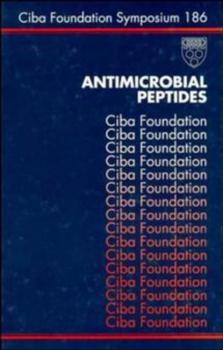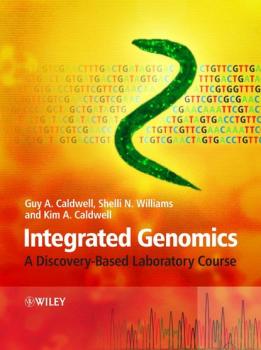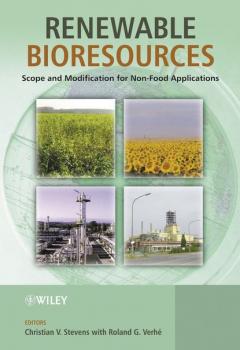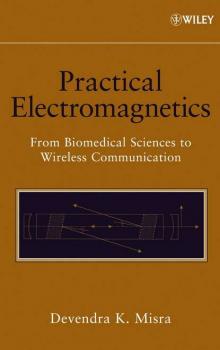ТОП просматриваемых книг сайта:
Прочая образовательная литература
Различные книги в жанре Прочая образовательная литература, доступные для чтения и скачиванияАннотация
Describes the structure and function of important peptides from several different organisms. An exciting development is the use of these peptides or their analogues in the treatment and prevention of infectious diseases. Considers ways in which these peptides may be used to control the insect vectors of key pathogens including the malarial parasite. Discusses the role of antimicrobial peptides in the mammalian immune system and their interaction with other components of that system.
Аннотация
Integrated Genomics: A Discovery-Based Laboratory Course introduces the excitement of discovery to the basic molecular biology laboratory. Utilizing up-to-date molecular biology protocols and a basic experimental design, this text offers experience with three different model systems. Students will become familiar with the simplicity and power of single-celled organisms, Escherichia coli and Saccharomyces cerevisiae, as they search for genes that interact and function within the nematode Caenorhabditis elegans. Incorporated throughout the course are exercises designed to offer students familiarity with the wealth of bioinformatics data that can be accessed on the World Wide Web. Following completion of interaction studies within the yeast, the course is designed to allow students to examine the functional consequences of reducing a gene’s function within the multicellular worm that is both simple and inexpensive to maintain within a laboratory. The inclusion of alternative experiments allow for flexibility in determining the ending date or goal of the laboratory, as well as working within the available budget and resources of most any classroom environment. Further striking features of this title are: An accompanying Web site providing PowerPoint slides, plus links to the internet, and regular updates as bioinformatics databases evolve and methods improve. www.wiley.com/go/caldwell Inclusion of modern genomic/proteomic technologies such as the yeast two-hybrid system and RNAi Detailed experimental protocols and easy access to instructional materials This discovery-based laboratory course provides excellent practical training for those pursuing career paths in biomedicine, pharmacy, and biotechnology.
Аннотация
Molecular Forensics offers a comprehensive coverage of the increasingly important role that molecular analysis plays within forensic science. Starting with a broad introduction of modern forensic molecular technologies, the text covers key issues from the initial scenes of crime sampling to the use of evidential material in the prosecution of legal cases. The book also explores the questions raised by the growing debate on the applications of national DNA databases and the resulting challenges of developing, maintaining and curating such vast data structures. The broader range of applications to non-human cases is also discussed, as are the statistical pitfalls of using so-called unique data such as DNA profiles, and the ethical considerations of national DNA databases. An invaluable reference for students taking courses within the Forensic and Biomedical sciences, and also useful for practitioners in the field looking for a broad overview of the subject. Provides a comprehensive overview of modern forensic molecular technologies. Explores the growing debate on the applications of national DNA databases. Discusses the initial phases of investigation to the conclusion of cases involving molecular forensic analysis.
Аннотация
The brief length and focused coverage of Human Evolution: An Illustrated Introduction have made this best-selling textbook the ideal complement to any biology or anthropology course in which human evolution is taught. The text places human evolution in the context of humans as animals, while also showing the physical context of human evolution, including climate change and the impact of extinctions. Chapter introductions, numerous drawings and photographs, and an essential glossary all add to the accessibility of this text.The fifth edition has been thoroughly updated to include coverage of the latest discoveries and perspectives, including: · New early hominid fossils from Africa and Georgia, and their implications · New archaeological evidence from Africa on the origin of modern humans · Updated coverage of prehistoric art, including new sites · New perspectives on molecular evidence and their implications for human population history. An Instructor manual CD-ROM for this title is available. Please contact our Higher Education team at [email protected] for more information.
Аннотация
Renewable Bioresources: scope and modification for non-food applications is the first text to consider the broad concept of renewable materials from the socio-economic aspects through to the chemical production and technical aspects of treating different raw products. The text sets the context of the renewables debate with key opening chapters on green chemistry, and the current situation of US and EU policy regarding sustainability and industrial waste. The quantitative and technical scope and production of renewable resources is then discussed with material looking at integral valorisation, the primary production of raw materials, downstream processing, and the identification of renewable crop materials. The latter part of the book concludes with a discussion on the uses for renewable materials such as carbohydrates, woods, fibres, biopolymers, lipids and proteins in different industrial applications, including a key chapter on the high value-added industries. Covers the broad concept of renewable resources from different points of view. Takes readers through the identification, production, processing and end-applications for renewable raw materials. Considers and compares EU and US renewable resources and sustainability objectives. Devotes one chapter to green chemistry and sustainability, focussing on the green industrial processes. This is an essential book for upper level undergraduates and Masters students taking modules on Renewable Resources, Green Chemistry, Sustainable Development, Environmental Science, Agricultural Science and Environmental Technology. It will also benefit industry professionals and product developers who are looking at improved economic and environmental means of utilising renewable materials.
Аннотация
The first book on Localized Waves—a subject of phenomenal worldwide research with important applications from secure communications to medicine Localized waves—also known as non-diffractive waves—are beams and pulses capable of resisting diffraction and dispersion over long distances even in non-guiding media. Predicted to exist in the early 1970s and obtained theoretically and experimentally as solutions to the wave equations starting in 1992, localized waves now garner intense worldwide research with applications in all fields where a role is played by a wave equation, from electromagnetism to acoustics and quantum physics. In the electromagnetics areas, they are paving the way, for instance, to ubiquitous secure communications in the range of millimeter waves, terahertz frequencies, and optics. At last, the localized waves with an envelope at rest are expected to have important applications especially in medicine. Localized Waves brings together the world's most productive researchers in the field to offer a well-balanced presentation of theory and experiments in this new and exciting subject. Composed of thirteen chapters, this dynamic volume: Presents a thorough review of the theoretical foundation and historical aspects of localized waves Explores the interconnections of the subject with other technologies and scientific areas Analyzes the effect of arbitrary anisotropies on both continuous-wave and pulsed non-diffracting fields Describes the physical nature and experimental implementation of localized waves Provides a general overview of wave localization, for example in photonic crystals, which have received increasing attention in recent years Localized Waves is the first book to cover this emerging topic, making it an indispensable resource in particular for researchers in electromagnetics, acoustics, fundamental physics, and free-space communications, while also serving as a requisite text for graduate students.
Аннотация
Professor Jean Van Bladel, an eminent researcher and educator in fundamental electromagnetic theory and its application in electrical engineering, has updated and expanded his definitive text and reference on electromagnetic fields to twice its original content. This new edition incorporates the latest methods, theory, formulations, and applications that relate to today's technologies. With an emphasis on basic principles and a focus on electromagnetic formulation and analysis, Electromagnetic Fields, Second Edition includes detailed discussions of electrostatic fields, potential theory, propagation in waveguides and unbounded space, scattering by obstacles, penetration through apertures, and field behavior at high and low frequencies.
Аннотация
Learn to solve both simple and complex electromagnetic problems with this text’s unique integration of theoretical and mathematical concepts. With the author’s guidance, you’ll discover a broad range of classic and cutting-edge applications across a wide array of fields, including biomedicine, wireless communication, process control, and instrumentation. Case studies, detailed derivations, and 170 fully solved examples deepen your understanding of theory, and help you apply numerical methods to real-world problems.
Аннотация
Aimed at Masters, and PhD students, teachers, researchers and natural resource managers, this book explores the interface between restoration ecology and ecological restoration. Covers both the ecological concepts involved in restoration ecology and their practical applications. Written by an excellent group of ecologists from centres across Europe with a strong reputation for restoration ecology. Only textbook around aimed specifically at advanced undergraduate courses and postgraduate study programmes.
Аннотация
This carefully structured laboratory manual explores, by means of computer simulations, the key areas of population dynamics through time. Using simply presented exercises, it teaches the programming and analysing skills students need for creating their own models of population change. In this way, readers can contribute constructively to the conservation of endangered species and the control of pest species. Focus on biology rather than mathematical procedures Introduces new techniques and shortcuts gradually with carefully explained commands Includes an extensive glossary Undergraduates and postgraduates taking courses in population ecology, behavioural ecology and conservation will find this an ideal accompaniment.










